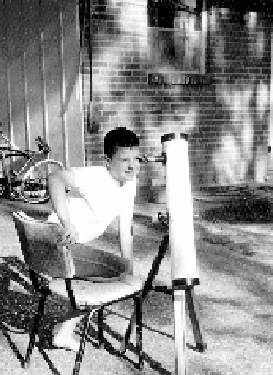
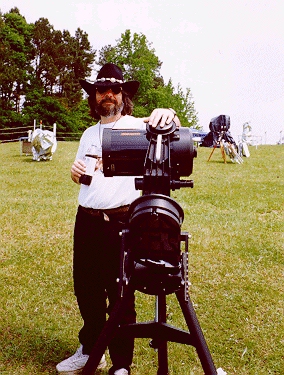
All About Old Uncle Rod
(Well, A Little Bit About Uncle Rod Anyway)


Last Cotton-pickin' Update: Saturday, February 14, 2009 04:39 PM
Rod, how did you get started in astronomy?
It all began with Stephanie's telescope...
For most of us astronomers, amateur and professional, there's a single defining moment. An epiphany, the moment when the whole, beautiful night sky opens up for us--or, at least, when we become aware of the possibility of that happening. For some of us this moment comes late in life. Maybe a quest for a "retirement hobby" turns up this crazy amateur astronomy business. Or a friend talks us into attending an astronomy club meeting. Perhaps we pick up an astronomy magazine in an airport newsstand and the pretty pictures beguile us. Maybe we get started in high school physics and suddenly find ourselves on a crazy quest for a PhD in astronomy (and a job to go with it).
Often, though, that moment comes when we are very young; I think that was especially true for my generation. In the late 1950s, space was all around us. Sputniks were flying overhead--to our parents' horror, but to our delight--and the U.S. space program, still an infant, was being thrown into high gear. Yes, the Outer Limits was on everybody's mind in those long lost days. Me? I seemed to have been born with a gnawing curiosity about the Great Out There. How did I come by that? Since we are all a product of our parents, my course was no doubt set by mama and daddy--without them even knowing it. Combine daddy's European heritage and technical/scientific bent with mama's strong streak of Celtic mysticism, and you have an astronomer in the making. But the birth of an astronomer, amateur or professional, requires something else--some spark in addition to a general curiosity about the heavens--to really get the ball rolling. For me, that spark was Stephanie's telescope.
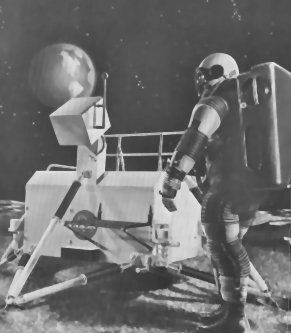
I was curious, yeah, but being just a little chirper in a big, wide world, I didn't dream I could do anything to satisfy my curiosity. At one point, the parents had bought me a beginner's book on astronomy (from the late, lamented Science Service) which had a "star finder" (planisphere) bound into it. While I enjoyed looking at the book's pictures, what I really dreamed of was using my new star finder to locate all kinds of wonders. But I could never convince anybody to take me out into the yard after dark and let me try to use the thing. Oh well. I contented myself by watching science fiction films (reruns of Flash Gordon serials and the usual Earth vs. The Flying Saucers style of 50s sci-fi movies) and playing with the plastic rocket-ships that now crowded the toy department shelves. There matters stayed until one after-Christmas show-and-tell day in the 4th grade.
I don't know if "show-and-tell" is something that's still done in elementary schools, but it was very popular in those days of yore, giving both us and the teacher a break from our normal routine of studying the multiplication tables between duck and cover air-raid drills. It went like this: you brought an item to school (a toy, a book, even a pet), stood up in front of the class and gave a short talk about your item. 47 long years later, I have no idea what I brought to show and tell on that luminous day, but I do remember with crystal clarity my classmate Stephanie's presentation
Stephanie usually brought good stuff, but what she had on this day was way beyond good. Perched on a spindly black tripod was a gleaming white tube. Almost instinctively I knew this was a telescope, a telescope for looking at the stars--not a dime-store spyglass like you used when you were playing pirate. I couldn't figure out how you "looked into it," though, since the "eye thing" seemed to be on the wrong end. But Stephanie soon explained that this was a special sort of a telescope, a reflecting telescope, which used a mirror instead of the more familiar lens. She went on to reveal that she and her father had actually used this Gilbert (once a big name in kids' microscopes, telescopes and chemistry sets) telescope to see craters on the moon. 'Magine that! They could actually look at Moon craters. Any time they wanted! All I knew was that I had to have one of these little 2-inch Gilberts. Understand me: not just something I wanted, something I HAD to have.

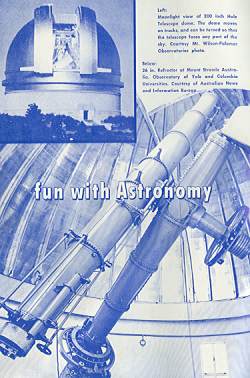
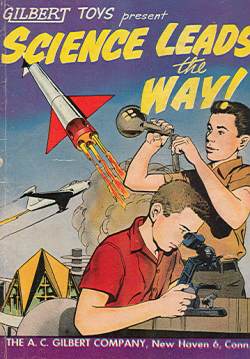
I made a lot of noise to my parents about wanting a scope over the next few weeks, and I believe they allowed as how they'd "see about it" (I was disheartened, since "see about it" usually meant, "No, you'll forget about it soon enough; we can't afford it anyway."). No scope was forthcoming. Perhaps they just wanted to be sure I was serious about the this somewhat odd new preoccupation: "How about a nice slot car or a new glove instead, like your ("normal") friends want?". Or maybe the money really wasn't there. It's easy to forget amidst the nostalgia for those supposedly innocent times, but in the late 1950s and early 1960s the middle class--the middle-middle class--had resources more akin to what we refer to in these affluent times as the "lower-middle-class" (or lower). But I didn't stop pestering, and I think Mom realized just how serious I was the day our Cub Scout Den visited the observatory.
One warm spring Saturday afternoon (surely it must have been a warm and sunny Saturday), I was ensconced in the local movie house, The Roxy, watching a science fiction movie I'd dragged Mum to see--First Spaceship on Venus (yes, I remember the title)--when she reminded me as the end credits were rolling that we needed to get going, since the Den was going out to look through Springhill College's big telescope that evening. At first I was a bit put out. We'd come in after the movie started, and I wanted to see the beginning once they started the film over (you were actually allowed to do that back in those old pre-cineplex days). But Mum reminded me that I was the one who was "so interested in telescopes." I allowed myself to be dragged out.
Springhill's telescope, a 12-inch Cave (or maybe a Criterion), I believe, was not what we'd call "big" these days, but when I entered the small dome, I really felt as if I were on Palomar Mountain. I didn't mind waiting in line for a little while, since I could gawk at the "scientific instruments" revealed in the dim red light. Above all, I could admire The Telescope with its beautiful tube and a massive mount which was equipped with humming motors and intricate and arcane-looking controls. I had read a cheap (in every sense) SF novel centered around Palomar's Hale Reflector, The Big Eye, seven or eight times, and when I was allowed to climb the little ladder to the Cave's eyepiece, it felt as if I were ascending to the 200-inch prime focus cage. Then it came: my first look through any scope (I hadn't had a chance to even peek at a telephone pole through Stephanie's telescope that day in school).
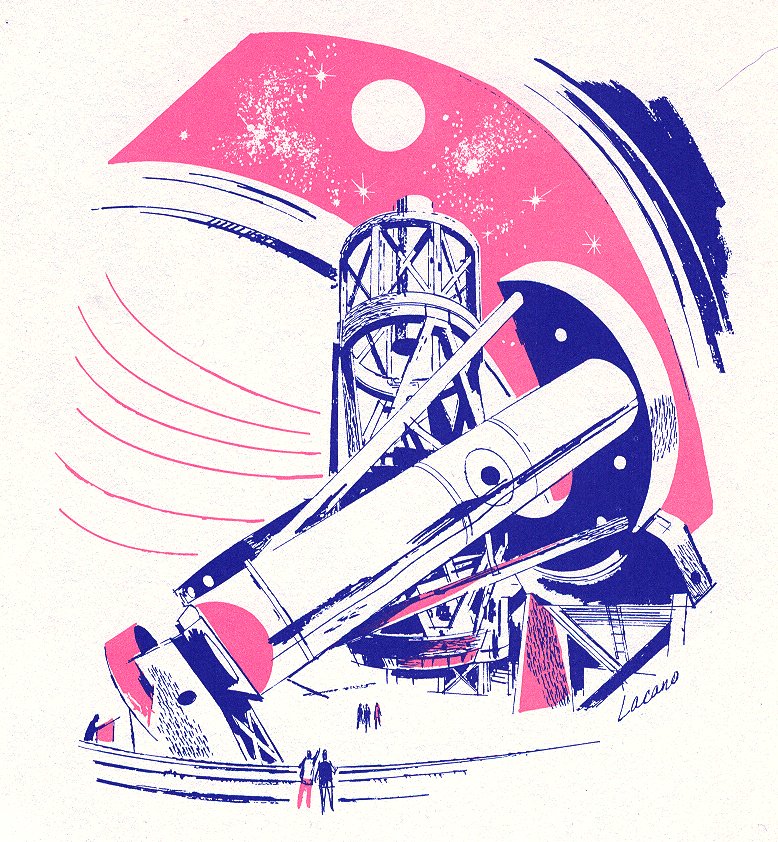
Memories can be deceptive, but what's locked in my mind is a perfect vision of M51 showing spiral structure big time. And this may actually be accurate, since a 12-inch Newtonian would have been perfectly capable of delivering considerable spiral structure in this bright galaxy in those not-so-light-polluted days. I felt transported. My mind seemed to get a tiny grip around the true scope and majesty of our universe. If I needed to be more hooked, I was more hooked.
The way I chirped about this field trip for days (weeks) afterward must have convinced the parents. It was not long afterward that I DID get a telescope of my own, a 3-inch Tasco reflector my dad rescued from a pawn shop. It wasn't much by today's standards--or even yesterday's--but it became my own personal rocket ship. I tested the controls, took off, and have just kept soaring ever since.
Oh so many years have passed since Stephanie showed-off her telescope. I feel very lucky to be making at least part of my living from astronomy these days. It's a crowded field with few openings and many starry-eyed folks clamoring for them. Anyway, it's certainly been quite a trip, and it started on that long-ago show-and-tell day when a proud little girl stood up to talk about her best present--Stephanie's Telescope.
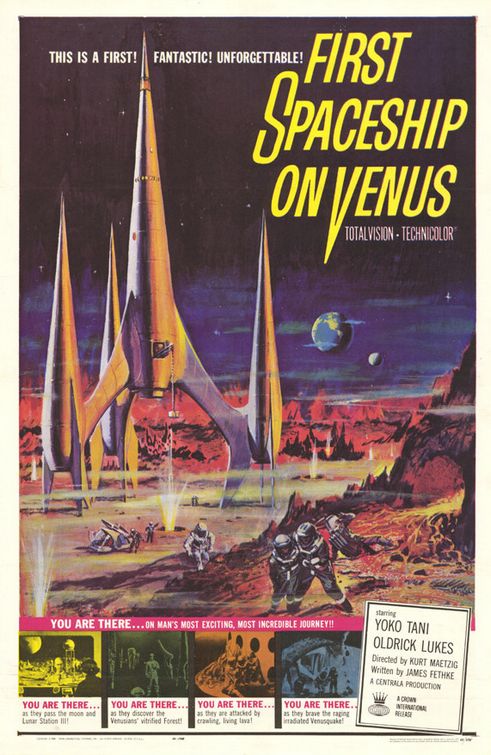
So, you never did get the A.C. Gilbert reflector of your dreams?
Well, actually, I finally did get my own "Stephanie's Telescope," but I had to wait 40 years to get it. I recently saw one for sale on eBay (where else?), and despite the slightly ridiculous price, I couldn't resist doing the Paypal thing. Somehow I felt as if a long-open circle had been closed. See my blog entry on the subject for more...
Do you still have your first telescope, the 3-inch Tasco?
'Fraid not. One of my dad's colleagues (he was a broadcast engineer at a local TV station) bought his son a 4.25-inch Edmund "Palomar Junior" reflector in 1966. Unfortunately, the boy had really wanted a go-cart. Mom sided with sonny. Thus, the Edmund had to go. My dad offered him 60 bucks for it, which he quickly accepted. Trouble for us was finding those 60 simoleons. The 3-inch had to be sold (for 15 bucks, I believe, about what it was worth) to finance the PJ. And, frankly, the Tasco had become more frustrating than wonderful over the couple of years I owned it. It was fine on the Moon and OK on the deep sky, but had a hard, hard time with the planets--Jupiter looked more like a custard pie than a planet. The 4.25-inch? I've hung onto it through thick and thin; today, PJ has an honored spot in Chaos Manor South's massive equipment vault, and will undergo a complete restoration in the coming months.
What kind of work do you do now? In astronomy, I mean?
In addition to writing books (Choosing and Using a New CAT was my last), I've contributed to numerous astronomy magazines including Sky and Telescope and Sky Publishing's late, lamented Night Sky Magazine (IMHO, the BEST-ever resource for beginning/intermediate amateurs--back issues are still available). I was very pleased to be associated with that publication. I've also recently appeared in Astronomy Technology Today, which gets my vote for "best new astro-magazine."
While writing occupies a significant part of my time (I still hold onto my daytime engineering job, too), I also teach astronomy to undergraduates at the University of South Alabama. Frankly, that's my main interest and my niche in the science--turning people onto the night sky, whether in an academic setting or out of it. I dreamed of being a research astronomer when I was a youngster, but we usually find our correct paths eventually, and I found mine--in spades.
As I said above, I know I am lucky to be making any money in astronomy (not that the money's ever mattered much, really). Very lucky indeed. "Many are called, few are chosen," and I know there are countless folks who are far smarter and more talented than I am who'd love to be doing what I'm doing. Frankly, I'm living my dream.
Other than working with the novices, what's your interest in astronomy at the moment?
I've had an enduring interest in double stars. In a real stroke of luck, I found some kindred spirits in the University of South Alabama Physics Department, and we've begun publishing a little periodical I'm very proud of, The Journal of Double Star Observations (JDSO). I'm also interested in long term monitoring of the planets, and have done a lot of imaging of Jupiter, Mars, and Saturn over the last several years. On the "just for fun" side, I've kept my hand in when it comes to deep sky observing and imaging.
As I've told quite a few people, I'm the original astronomy dilettante.
Is the Schmidt Cassegrain really the "best" telescope for amateurs?
Yep. All things being equal. Of course, all things are not always equal. ;-)
Is there really a Chaos Manor South?
There most certainly is. "Chaos Manor South" is how my dear wife, Miss Dorothy, and I refer to our Victorian home in Mobile, Alabama's Garden (historic) District. It's a bit large for us now that it's just me and Miss D., but that means there's lots of spare room for scopes and equipment. On the downside, we're heavily light-polluted here in the downtown area. Luckily, those sodium-pink skies don't do too much to cramp my style, since I spend a large part of my time imaging the Solar System with CCD cameras backyard or goin' deep visually or imaging-wise from my club's nice dark site.
And how about all the REBEL YELL stuff?
Need you even ask? See http://rebelyellwhiskey.com/ ... Some things are too serious to joke about.
How old are you?
Old enough to know better, but still too young to care...
Care to tell us about any current book projects you're working on?
I've just finished a follow-up to my 2000 book, Choosing and Using a Schmidt Cassegrain Telescope. The new one, titled Choosing and Using a New CAT, is now available. This is not just a revision to the original, but an almost completely new book. I was VERY happy with the manuscript, and think you will like the finished product. What's next? I'm a-ruminatin' on that right now.
What is best thing about being an astronomy writer?
I get invited to speak at quite a few star parties. That means I get to meet a lot of nice folks and look through their wonderful telescopes.

50 Years later, this is just a cheap plastic toy, but one summer I rode it to every world in the Solar System and marveled at wonders yet to be discerned by JPL.
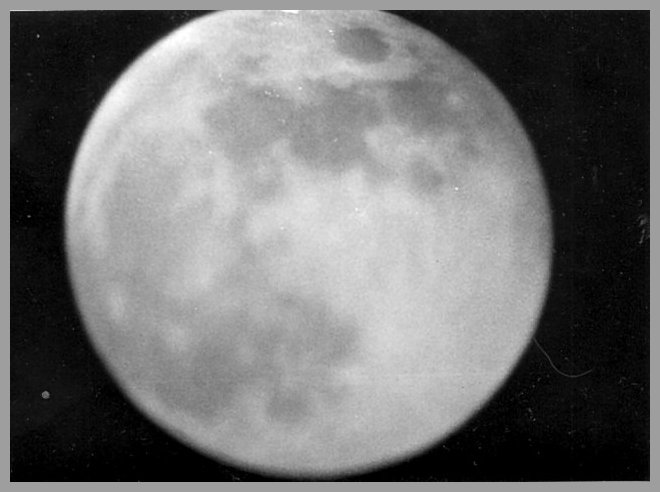
Rod's first astrophoto. At least it's identifiable as the Moon. Barely! 3-inch Tasco reflector (shown at the top of the page) and Argus Seventy-Five, which was a 620 film box camera, really. Shot afocally with a .965" 25mm eyepiece (one of those dreaded "H" oculars).
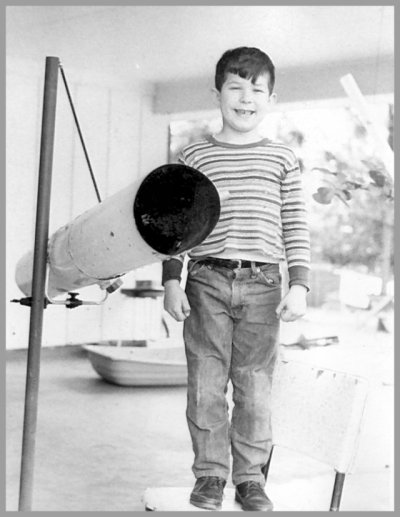
My brother, Danny, posed with a 6-inch Newtonian we were able to borrow for a short while. It was an f/10, with no finder, and mounted on a surplus mic boom stand. If you tried really hard, you could get the Moon in the field of its single (home-made) eyepiece. Despite a tarnished silvered mirror, I thought the image of Luna it yielded was superior to that of my 3-inch. So began aperture fever. Danny, by the way, never much liked telescopes or astronomy. Go figure.

The wonderful Miss Dorothy at one of the first star parties we attended together after our marriage in 1994, the Mid South Star Gaze in April of '95.
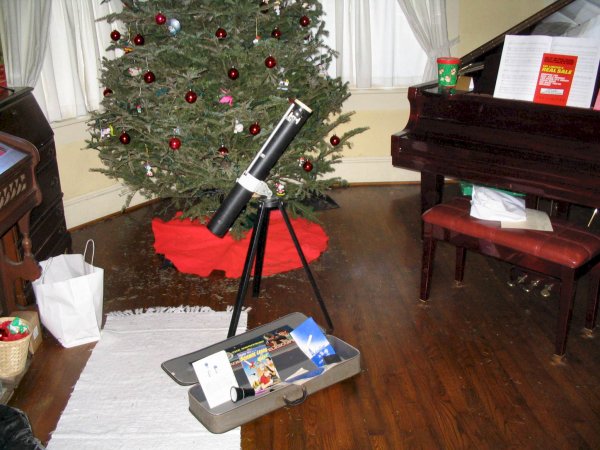
The A.C. Gilbert. It's the most humble telescope at Chaos Manor South, but in some ways, the most wonderful.
Do you have questions for Unk Rod?
If you'd like to ask something just click here:
![]()
Back You Go To Astroland With A Click Of The Possum